22 Powerful Reasons Keepsake Urns for Ashes Are More Important Than You Think

When someone close to us passes away, we often feel a desperate need to hold on—to their voice, their scent, their presence. While photos and letters can offer some comfort, there’s something profoundly grounding about keepsake urns for ashes. They don’t just represent our loved ones—they carry a part of them.
Table of Contents
In a time when personalization and emotional healing have become cornerstones of the grief process, keepsake urns are being chosen more frequently by families across the United States. But what are they really? And why do they matter so deeply?
Let’s explore this meaningful question, from the emotional to the practical—because if you’ve lost someone you love, or are preparing for the future, you deserve to know what keepsake urns can offer you and your family.

1. What Are Keepsake Urns? Understanding Their Purpose in Cremation and Ashes Sharing
A keepsake urn is a small urn that holds a symbolic amount of cremated remains (ashes). These are not meant to contain all of the ashes but just a portion—often just 1 to 5 cubic inches. They’re perfect for families who wish to share ashes, or for individuals who want to keep a piece of their loved one close.
While traditional urns might be placed in a columbarium, buried, or kept on a mantle, keepsake urns are more versatile. They can be:
- Kept in private bedrooms or study nooks
- Given to siblings or grandchildren
- Paired with cremation jewelry for daily remembrance
In fact, the Cremation Association of North America (CANA) notes that as cremation rates rise (now exceeding 57% in the U.S.), so does the personalization of memorials—especially through small urns.
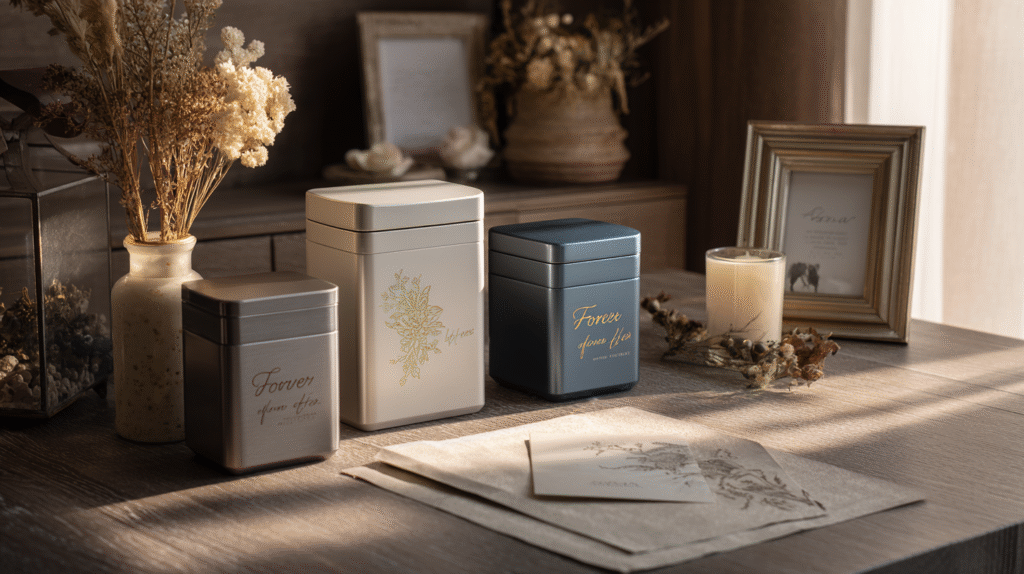
2. Why Do Families Choose Keepsake Urns for Ashes? The Human Side of Grief
Grief isn’t one-size-fits-all. Some people want to keep all of their loved one’s ashes in a traditional urn; others feel peace by scattering them at sea or under a tree. But more and more, families are asking: Can we each have a piece of them?
That’s the power of keepsake urns. They allow grief to be shared, just as love once was.
Real Story:
James Harper, a teacher from North Carolina, lost his wife to cancer. “We were high school sweethearts. After the funeral, our three kids each wanted to keep something of her. We ordered matching heart-shaped keepsake urns with her initials engraved. I can’t explain it, but seeing that urn beside my daughter’s nightstand brings a sense of peace I didn’t expect.”
This echoes what grief researchers like Elisabeth Kübler-Ross have emphasized for decades: healing happens when we feel connection, not when we force closure.
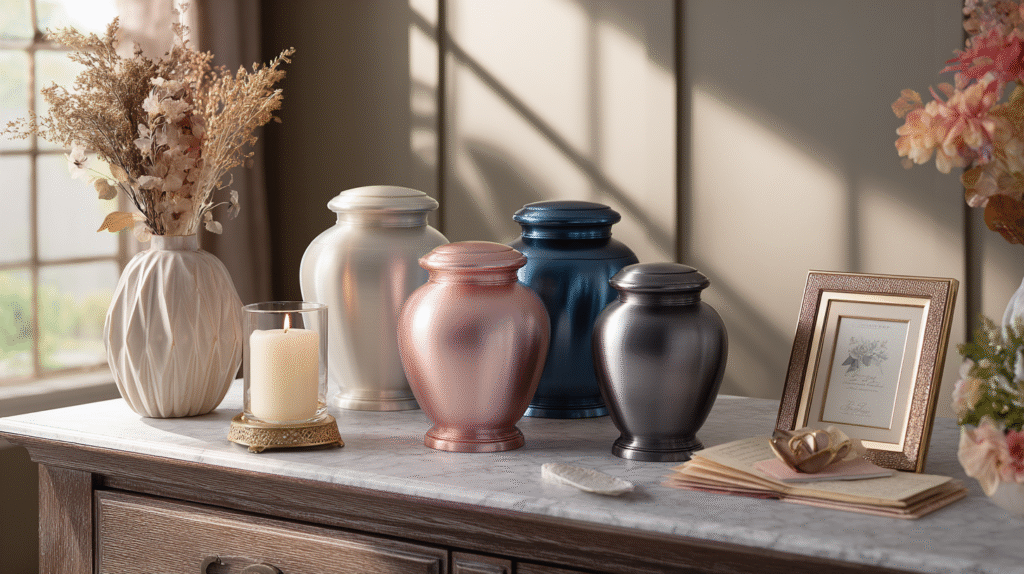
3. Types of Keepsake Urns: From Classic to Creative
Dei Gratia Urns, one of the leading names in the memorial industry, offers a wide selection of keepsake urns for different tastes and needs. Here are just a few popular types:
- Metal Keepsake Urns:
Made from brass, aluminum, or stainless steel, these are durable and timeless. - Wood Keepsake Urns:
Ideal for nature lovers or those who appreciated rustic aesthetics. - Ceramic and Glass Keepsakes:
Elegant, fragile, and deeply artistic. Perfect for indoor tribute displays. - Biodegradable Mini Urns:
Used in eco-friendly burials and water scatterings. - Themed Urns:
Motorcycles, hummingbirds, butterflies, or sports logos—these match the personality of the departed. - Cremation Jewelry with Micro-Urns:
Necklaces, bracelets, and rings that hold tiny portions of ashes. A perfect daily keepsake.
Whatever type you choose, make sure it reflects the essence of your loved one. A Tree of Life design, for instance, might be ideal for someone who believed in spiritual connection and growth.
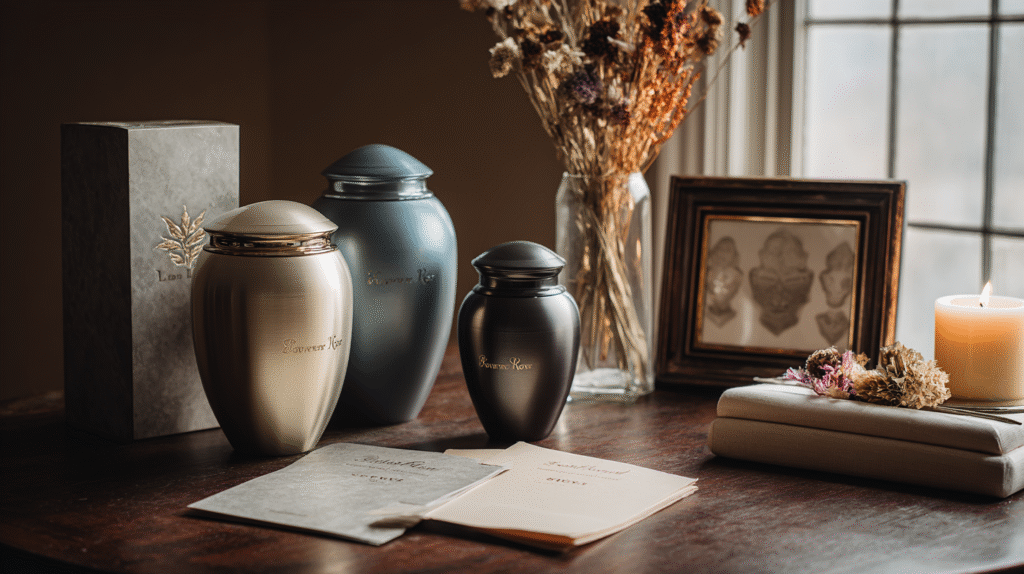
4. Symbolic Uses: What Keepsake Urns Represent Beyond Storage
To many, the idea of dividing ashes may sound clinical. But when done thoughtfully, it becomes deeply symbolic. A keepsake urn becomes:
- A symbol of shared love across generations.
- A private sanctuary for those not ready to visit a cemetery.
- A daily reminder of resilience and memory.
- A spiritual anchor during times of transition.
In religious or spiritual terms, these urns can even become sacred objects. In Buddhism, relics of the deceased are sometimes enshrined. Similarly, many Christians now keep a piece of their loved one’s ashes at home, paired with scripture or prayer candles.

5. When and Where Are Keepsake Urns Used? Beyond the Funeral Service
You might think urns only come into play during or after the funeral ceremony, but families are using them in more personal, diverse ways:
- At the Memorial Service:
Each sibling or child receives their keepsake during a moment of reflection. - On Anniversaries or Birthdays:
Some people create rituals around holding their keepsake urn, lighting a candle, or saying a prayer. - In Therapy or Counseling Sessions:
Having the urn nearby during grief therapy has shown to comfort some mourners, especially children. - In Memorial Gardens or Home Altars:
Keepsake urns sit beside photos, medals, letters, and memory books.
Grief expert Megan Devine notes, “Grief is not something to get over—it’s something to carry.” Keepsake urns help people carry that grief in a tangible, intimate way.
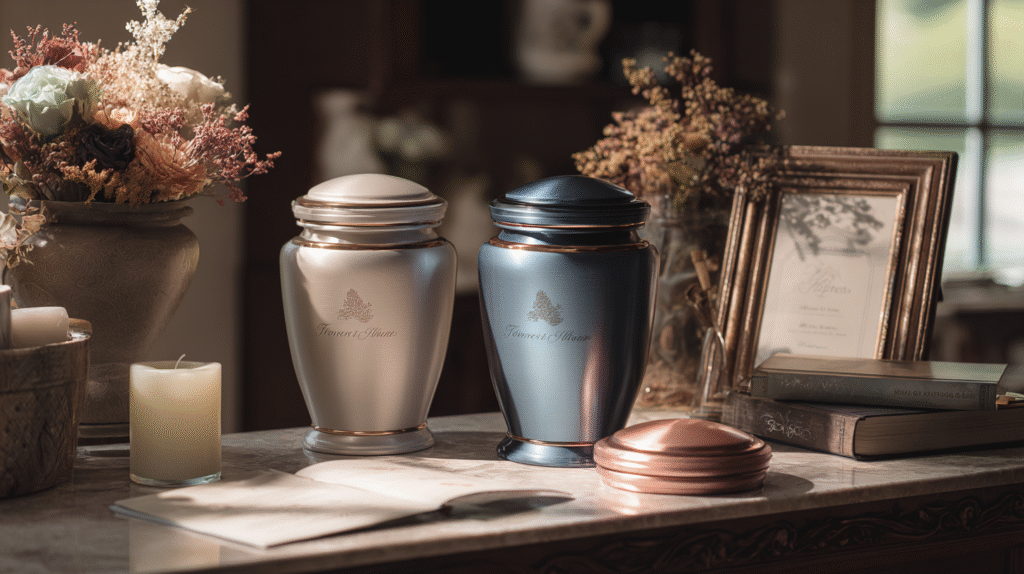
6. How Keepsake Urns Help Children and Teens Understand Loss
Children process death differently. They may not fully understand cremation or burial, but they do understand the need to hold on.
Giving a child a small, age-appropriate keepsake urn can help them develop rituals of connection. Some come shaped like hearts, teddy bears, or feature bright colors and symbols of peace.
Emma, a 9-year-old from San Diego, keeps a miniature butterfly urn for her grandmother. “When I miss her, I hug it,” she says. It’s a small act—but to her, it’s everything.
Schools and grief centers often use keepsake urns to help young mourners maintain a sense of connection while navigating profound emotions.

7. Pet Keepsake Urns: A Growing Trend in Memorializing Furry Companions
For many families, pets are not like family—they are family. As cremation for pets becomes increasingly common, so too does the desire to keep a small portion of a beloved pet’s ashes at home.
Keepsake urns for pets may include:
- Paw print engravings
- Animal silhouettes
- Custom name tags
- Matching keepsakes for multiple pets
Even celebrities like Oprah Winfrey and Ellen DeGeneres have spoken openly about mourning the loss of pets. Memorializing them with urns is no longer rare—it’s a recognized form of healing.

8. Designing and Personalizing Your Keepsake Urn
Many urn brands, including Dei Gratia Urns, allow for high levels of personalization:
- Engraved Messages: Names, dates, quotes, or even inside jokes.
- Color Choices: Reflect their favorite color or meaningful symbol.
- Photo Inlays: A tiny photo frame inside or on the urn.
- Matching Sets: Identical keepsakes for different family members.
This personalization transforms a simple container into a living memory. A reflection not just of loss—but of life.
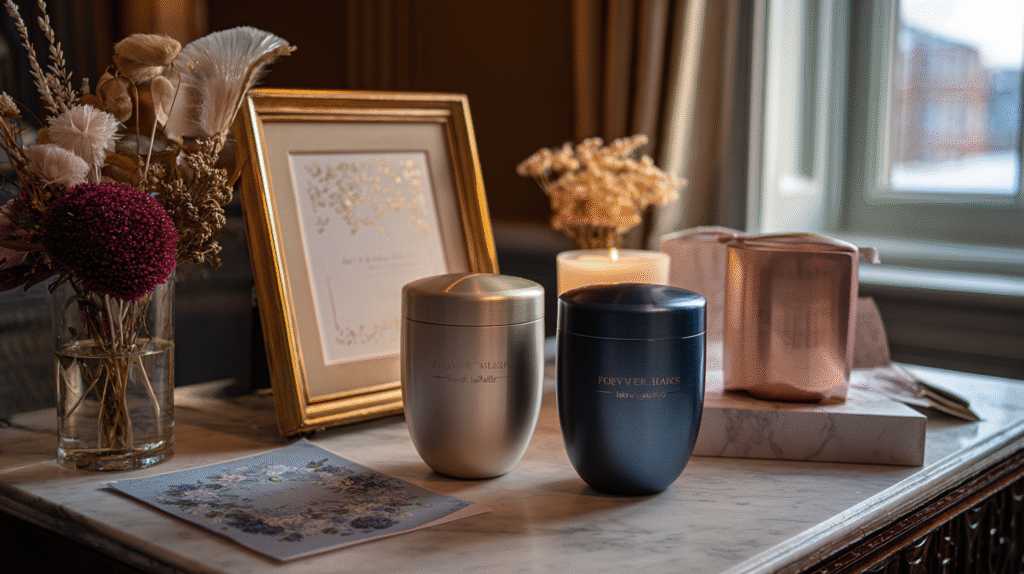
9. What to Consider Before Buying a Keepsake Urn for Ashes
Before you click “purchase,” take a moment. This isn’t just about style—it’s about emotional resonance.
Ask yourself:
- Will this urn be displayed or stored privately?
- Is the lid secure if it will be moved often?
- Is the material compatible with where it will be placed (sunlight, humidity)?
- Will it travel internationally or be taken on flights?
And most importantly: Does it feel like them?
That instinctual “yes” is all the permission you need.
If you’re unsure, Dei Gratia Urns offers expert customer service trained to guide families through this tender process.
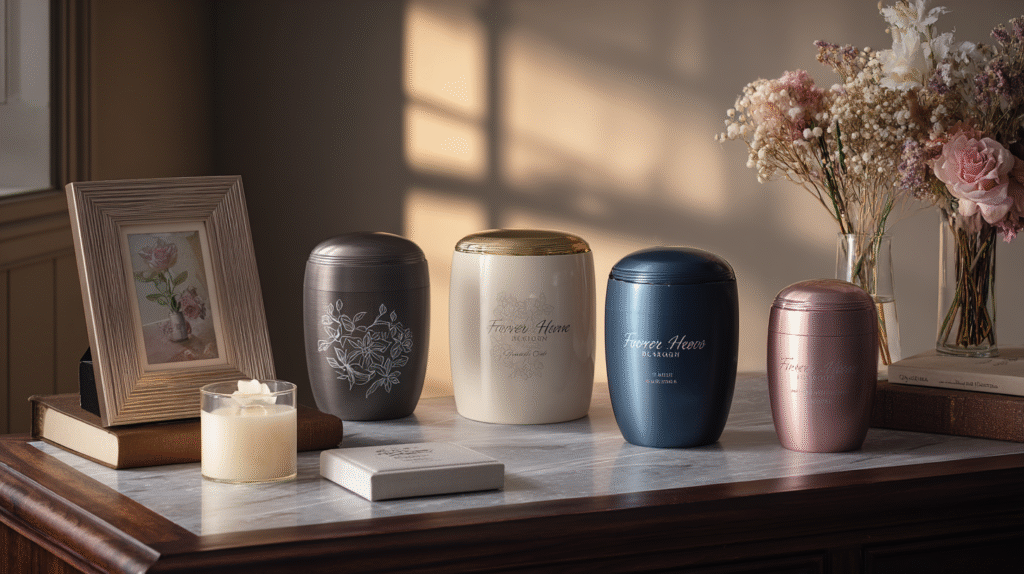
10. Stories That Stay with You: Families Who Found Healing with Keepsake Urns
Sometimes, real stories offer the most insight.
- Tom & Sheila from Chicago: “Our son died in a car accident. We weren’t ready to scatter his ashes. So we kept five small urns—one in each room he spent the most time in.”
- Lena from Georgia: “When my wife passed, I gave a mini urn to her best friend. She cried and said it was the most sacred gift she’d ever received.”
- Arjun from Texas: “My parents live in India. I sent them a keepsake urn of my brother’s ashes with a note. They lit candles every day during the first year. It helped them heal.”
These stories remind us: when we honor grief with intention, we honor love.

11. The Cultural Shift Toward Personal Memorials
In earlier generations, grief was formal, even restrained. A tombstone. A black suit. A single ceremony.
Today, it’s personal. It’s fluid. It’s filled with meaningful objects—like urns, tattoos, memory gardens, and keepsakes.
Psychologists call it continuing bonds theory: maintaining emotional ties with the deceased is healthy and natural. A keepsake urn is one of the gentlest ways to do this—without shame, without apology.
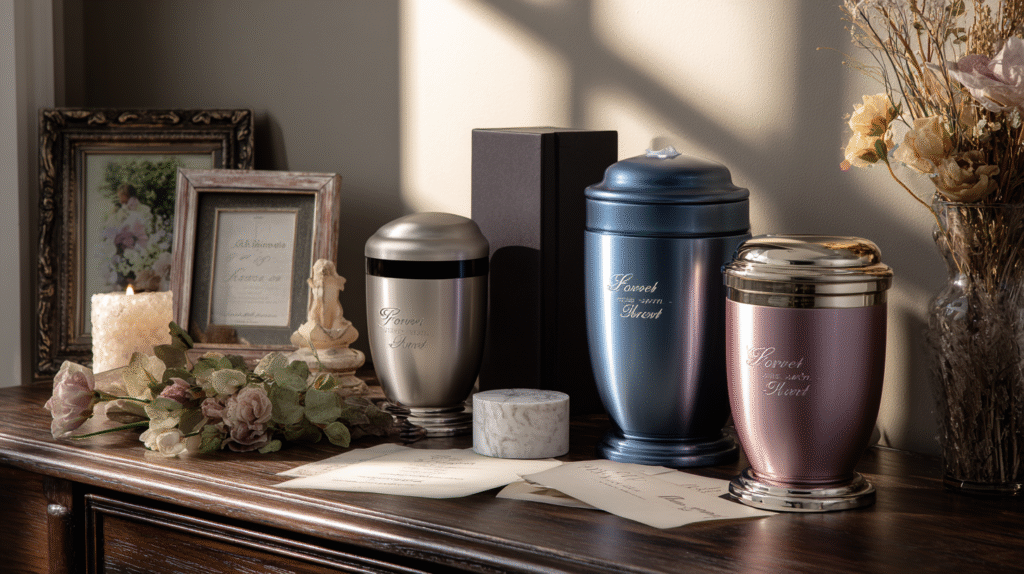
12. Where to Buy Keepsake Urns with Trust and Dignity
You can find keepsake urns at:
However, when choosing something as sacred as an urn, it’s often better to go with specialized memorial brands like Dei Gratia Urns. Their focus on craftsmanship, fast delivery in the U.S., and family-centered service makes them a compassionate choice for this delicate purchase.
Look for:
- Verified customer reviews
- Clear return policies
- Engraving options
- Biodegradable and eco-friendly materials if that aligns with your values
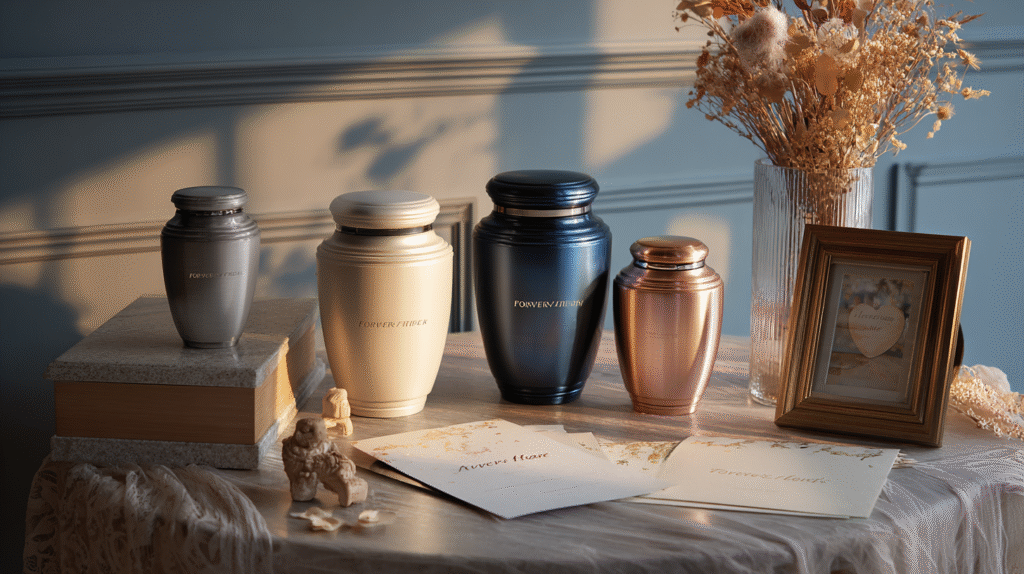
In Final Thought: The Keepsake That Keeps You Going
Grief never fully ends. It softens, it reshapes, it finds new places in the heart. And through that journey, we often crave something—anything—that still feels close to the ones we’ve lost.
A keepsake urn might seem small. But it holds immense power. Power to comfort, to connect, to carry.
It’s more than a container.
It’s a promise: You are remembered.
It’s a whisper: You are still with us.
For those moments when you ache to feel their presence, for those days when a photo isn’t enough, and for those nights when silence weighs heavy—your keepsake urn will be there.
And in that, there is love.
13. Keepsake Urns in Modern-Day Rituals: Beyond Religion and Culture
In the past, rituals around death were largely dictated by religion or regional customs. But modern society has evolved toward more personalized rituals, blending tradition with meaning that resonates individually.
For example:
- A secular family might host a “celebration of life” ceremony where each guest receives a candle and a keepsake urn filled with a small amount of ashes.
- A spiritual couple may design a small altar at home with crystals, photos, and a keepsake urn of their departed child.
- Veterans are often memorialized with miniature urns draped in flags or engraved with their service number—offering solace to families proud of their sacrifice.
Cultural evolution now supports and even celebrates this customization. Whether you’re religious, spiritual-but-not-religious, or somewhere in between, keepsake urns fit gracefully into any belief system because they are not about ideology—they’re about remembrance.
Even in Hinduism, where scattering ashes in a river like the Ganges is traditional, families sometimes keep a small amount in an urn at home, especially when separated by continents. These urns become symbolic bridges between tradition and practicality.

14. Keepsake Urns in the Digital Era: Hybrid Healing
The COVID-19 pandemic changed how the world mourns. Families held Zoom funerals, live-streamed cremation ceremonies, and ordered urns online. In this new hybrid space, keepsake urns played a crucial role.
Many people:
- Ordered matching keepsake urns and shipped them across states or countries to connect loved ones through memory.
- Created virtual memorials and included photos of the urns displayed in their homes.
- Held monthly “memory video calls” where each family member lit a candle beside their urn and shared a story.
Digital grief communities, like those led by Refuge in Grief or Modern Loss, support the integration of physical reminders like urns in online mourning practices.
A keepsake urn doesn’t just serve one moment—it becomes a lifelong anchor, even when life is scattered across screens and time zones.

15. Companion Keepsake Urns: Honoring Relationships in Eternity
Love doesn’t die. This is a universal truth for spouses, siblings, best friends, and even pets and their humans. That’s why companion keepsake urns have emerged as a rising trend.
These include:
- Matching urns designed for couples who want to remain together spiritually after death.
- Half-heart urn sets, where each urn is a half that completes the other.
- Engraved lyrics from wedding songs, inside jokes, or shared quotes.
Angela and Rose, a married couple for 47 years, had always talked about dying together. When Rose passed first, Angela commissioned matching butterfly-shaped keepsake urns. “She has hers now. And one day, I’ll have mine beside hers. It’s our forever plan.”
There’s comfort in that vision. Keepsake urns allow the living to continue planning with the deceased, reinforcing connection and narrative.

16. Eco-Conscious Mourning: Are There Green Keepsake Urns?
Absolutely. With growing climate awareness, many families want to ensure their end-of-life rituals leave minimal environmental impact. Green burial and eco-friendly cremation urns are now widely available.
Types of eco keepsake urns include:
- Biodegradable paper urns: Often used for water scatterings or garden burials.
- Himalayan salt urns: Naturally dissolves in water.
- Plantable urns: Contain tree seeds; as the urn breaks down, new life begins.
Eco-friendly urns offer more than environmental responsibility—they give mourners a symbolic gesture: from death, life.
Arne Naess, a philosopher and founder of Deep Ecology, argued that life and death were part of the same sacred cycle. Keepsake urns made of natural materials reflect that belief intimately.

17. The Psychological Power of Keepsake Urns in Long-Term Grief
Psychologically, mourning is not a “phase” but a long-term journey. And keepsake urns play a critical role in mental and emotional health during that process.
Benefits include:
- Grief regulation: The ability to visit and touch the urn regulates emotional distress.
- Memory consolidation: Urns often prompt storytelling, helping the brain process and retain healthy memories.
- Emotional containment: Holding ashes provides a container not just for remains, but for complex feelings.
Dr. Alan Wolfelt, renowned grief counselor, speaks of the “companioning” model of grief—walking beside our loss rather than leaving it behind. A keepsake urn sits quietly beside us in that walk.

18. Can You Travel with a Keepsake Urn? TSA and Legal Advice
Yes—but there are considerations. Many people choose to travel with keepsake urns to:
- Scatter ashes in meaningful locations.
- Deliver ashes to distant family.
- Carry remains for memorial events.
TSA Guidelines allow cremated remains to be transported in carry-on luggage if packed in a container that can be x-rayed (avoid metal). Plastic, wood, or biodegradable urns are recommended for travel.
Make sure you:
- Carry a copy of the death certificate.
- Use a clearly labeled travel case.
- Declare the contents respectfully at security.
For international travel, consult with U.S. Customs and Border Protection or the destination country’s embassy. Some cultures require specific documentation or handling.
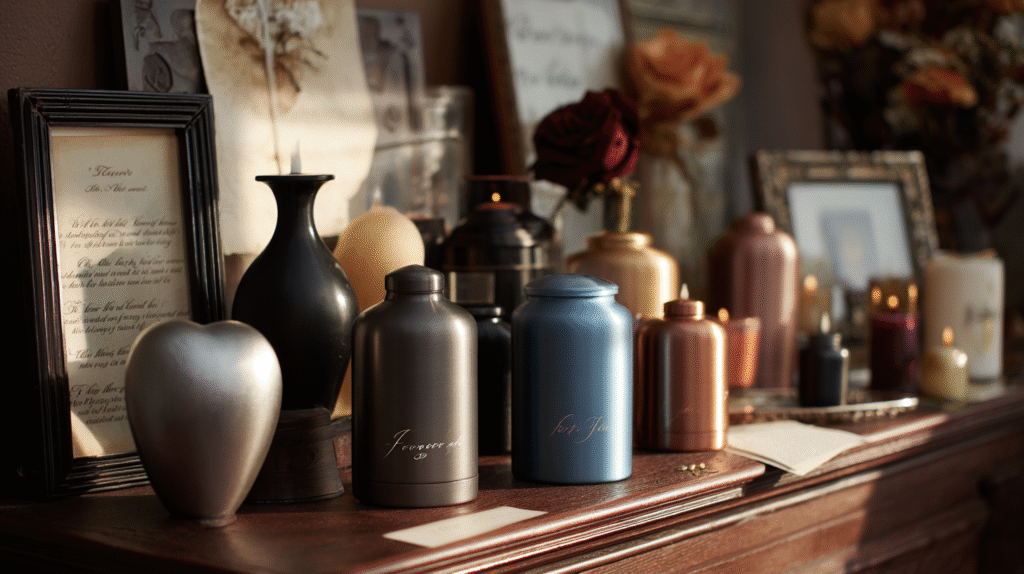
19. Pricing and Budget: How Much Do Keepsake Urns Cost?
The beauty of keepsake urns is that they are accessible across a range of budgets without compromising emotional value.
Price Range Breakdown:
- Basic metal urns: $25–$60
- Wooden or ceramic pieces: $50–$150
- Cremation jewelry (miniature urns): $80–$200
- Custom-designed or luxury urns: $200–$500+
Some families buy in sets to save, and brands like Dei Gratia Urns often offer discounts for matching keepsake collections.
Remember: the cost doesn’t determine value. A $40 urn that holds your father’s ashes beside your desk can be more powerful than any gold-plated container.

20. Do’s and Don’ts: How to Handle Keepsake Urns Respectfully
DO:
- Keep them in a location where they won’t be knocked over.
- Clean them gently with soft cloths.
- Store documentation (death certificates, cremation records) nearby.
- Include them in estate planning so future generations know what they are.
DON’T:
- Use adhesives or tapes that may degrade urn finishes.
- Leave them in direct sunlight unless specified as UV-resistant.
- Feel guilty about not visiting or interacting with the urn daily.
There’s no “right” way to grieve. Your relationship with your keepsake urn will ebb and flow—just as grief does.

21. Keepsake Urns and Legacy: What Will Yours Say About You?
Have you thought about what kind of keepsake urn you might want?
This question often stirs deep feelings. It also opens the door to powerful family conversations.
- Would you want your children to keep a piece of your ashes?
- Should your urn reflect your career, beliefs, or personality?
- Do you want to write a letter or record a video to accompany it?
These conversations, while emotional, are gifts. They help loved ones grieve more meaningfully later.

22. How Dei Gratia Urns Supports You in Choosing Keepsake Urns for Ashes
At Dei Gratia Urns, every keepsake urn is crafted with the understanding that this is more than a purchase—it’s a legacy.
Why families trust Dei Gratia:
- American craftsmanship backed by two decades of family experience.
- Fast shipping for families needing timely memorial planning.
- Compassionate customer service who understands grief.
- A wide range of eco-friendly, luxury, and budget options.
- Meaningful customization—from fingerprints to hand-etched messages.
Dei Gratia Urns doesn’t just offer urns. It offers memory vessels with dignity, elegance, and soul.

Final Reflection: Keepsake Urns Are a Whisper in the Silence
In the deepest quiet, long after condolences stop and life moves on, there remains a whisper of love, of memory, of presence. For many, that whisper takes form in a keepsake urn.
It’s not just a container.
It’s not just ashes.
It’s love held in form.
In a world that urges us to move forward, a keepsake urn lets us pause—to honor, to remember, to carry.
And in that pause, healing begins.
